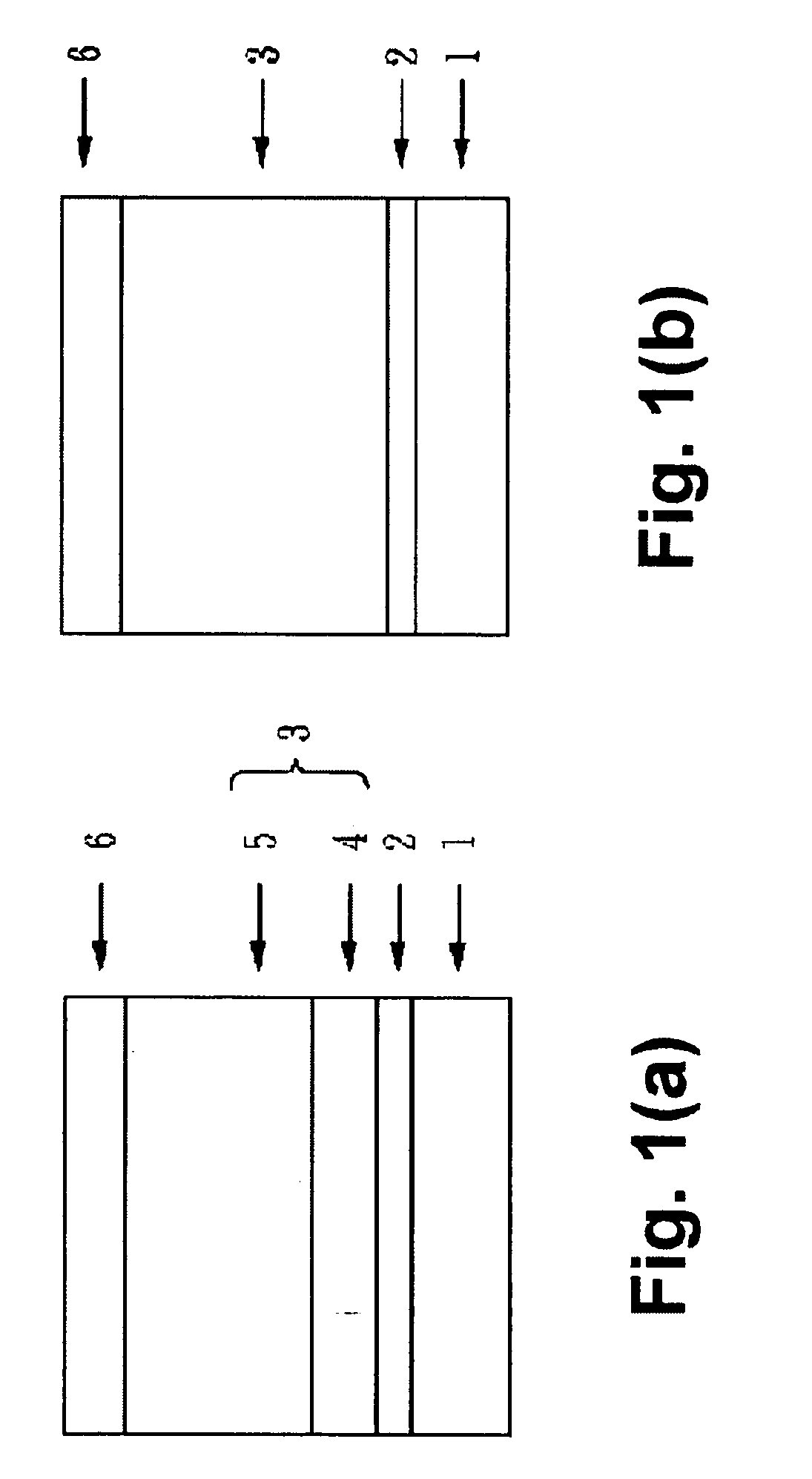Electrophotographic photosensitive devices and manufacturing methods thereof
- Summary
- Abstract
- Description
- Claims
- Application Information
AI Technical Summary
Benefits of technology
Problems solved by technology
Method used
Image
Examples
examples of synthesis
[0042] 300 parts by weight of 1,4-dioxane (manufactured by Wako Pure Chemical Industries, Ltd.) and 60 parts by weight of a raw material vinyl chloride resin (MR 110 manufactured by Zeon Corporation) were charged in a four-necked flask, and the resin was heated and dissolved at 50° C. 27 parts by weight of acetic anhydride (manufactured by Wako Pure Chemical Industries, Ltd.) and 160 parts by weight of acetic acid (manufactured by Wako Pure Chemical Industries, Ltd.) were added to this solution drop-wise over a period of 15 minutes, and the solution was heated and agitated for a further 16 hours at 100° C.
[0043] Following completion of the reaction, the reactants were re-precipitated using 4 volumes of methanol and after filtering and air-drying a crude product was obtained.
[0044] The crude product thus obtained was dissolved in 1300 parts by weight of methylene chloride (manufactured by Wako Pure Chemical Industries, Ltd.) to form a solution, and suction filtered by adding 50 par...
example 1
[0054] A coating liquid prepared by dissolving and dispersing 5 parts by weight of alcohol-soluble nylon (Amilan CM 8000 manufactured by Toray Industries, Inc.) and 5 parts by weight of fine particles of aminosilane-treated titanium oxide in 90 parts by weight of methanol was immersion coated as an undercoat layer to the outer circumference of an aluminum cylinder used as a conductive substrate, and this coating was dried for 30 minutes at a temperature of 100° C., thus forming an undercoat layer with a film thickness of 2 μm.
[0055] A coating liquid prepared by dispersing 1.5 parts by weight of the Y type titanylphthalocyanine described in Japanese Patent Application Laid-Open No. 64-17066 (used as a charge generating material) and 1.5 parts by weight of the abovementioned compound A (used as a resin binder) in 60 parts by weight of a mixture of equal amounts of dichloromethane and dichloroethane for 1 hour by means of a mixer was immersion coated on top of this underlayer, and thi...
example 2
[0057] An electrophotographic photosensitive device was manufactured by the same method as in Example 1, except that the resin binder used in the charge generating layer of Example 1 was replaced with a combination of 1 part by weight of the abovementioned compound A and 0.5 parts by weight of a polyvinylbutyral resin (S-Lec BX-1 manufactured by Sekisui Chemical Co., Ltd.).
PUM
| Property | Measurement | Unit |
|---|---|---|
| Angle | aaaaa | aaaaa |
| Temperature | aaaaa | aaaaa |
| Temperature | aaaaa | aaaaa |
Abstract
Description
Claims
Application Information
 Login to View More
Login to View More - R&D
- Intellectual Property
- Life Sciences
- Materials
- Tech Scout
- Unparalleled Data Quality
- Higher Quality Content
- 60% Fewer Hallucinations
Browse by: Latest US Patents, China's latest patents, Technical Efficacy Thesaurus, Application Domain, Technology Topic, Popular Technical Reports.
© 2025 PatSnap. All rights reserved.Legal|Privacy policy|Modern Slavery Act Transparency Statement|Sitemap|About US| Contact US: help@patsnap.com



